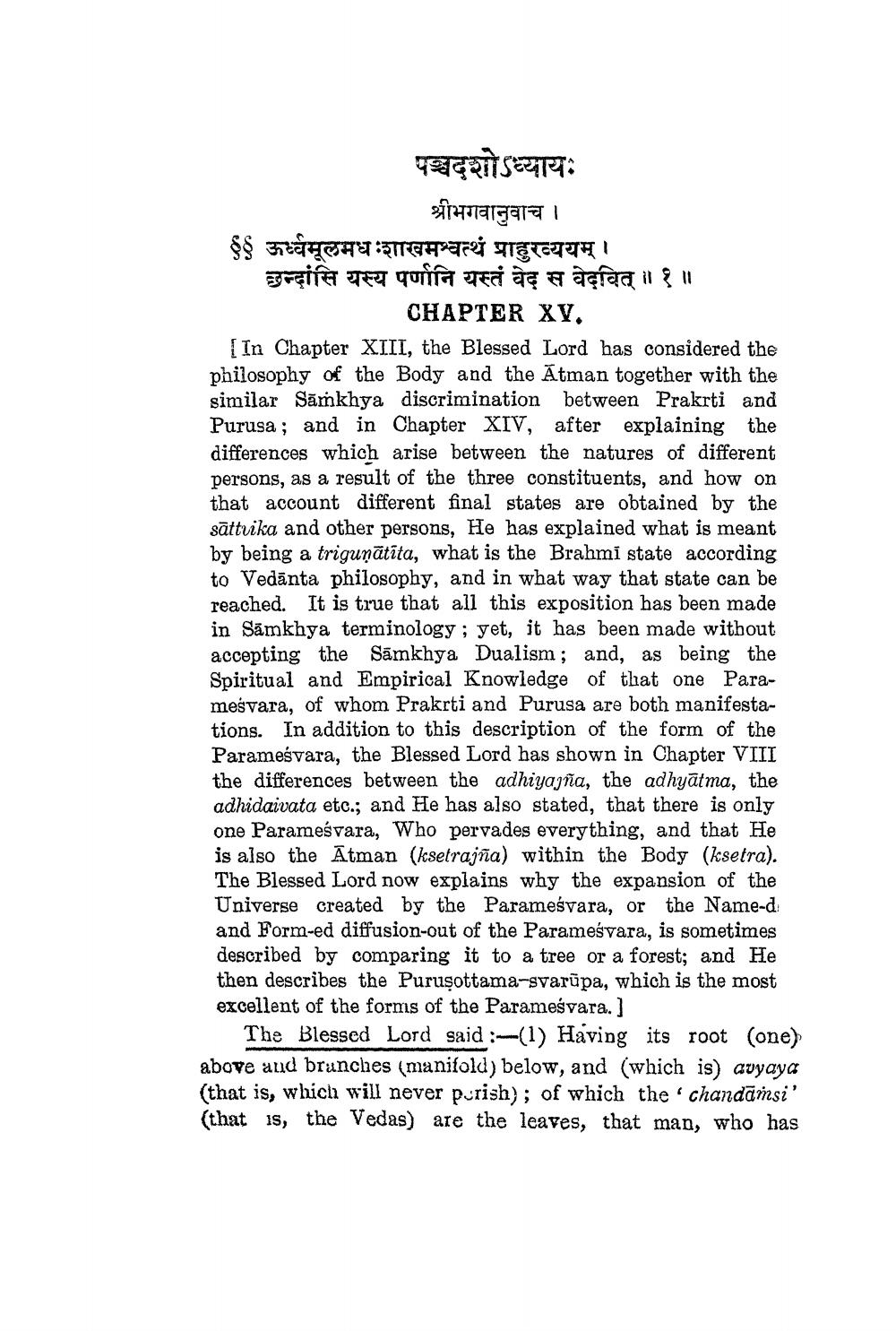________________
पञ्चदशोऽध्यायः
श्रीभगवानुवाच । ६ ऊर्ध्वमूलमध शाखमश्वत्थं प्राहुरव्ययम् । छन्दांसि यस्य पर्णानि यस्तं वेद स वेदवित् ॥१॥
CHAPTER XV. (In Chapter XIII, the Blessed Lord has considered the philosophy of the Body and the Ātman together with the similar Samkhya discrimination between Prakrti and Purusa; and in Chapter XIV, after explaining the differences which arise between the natures of different persons, as a result of the three constituents, and how on that account different final states are obtained by the sättvika and other persons, He has explained what is meant by being a triguņātīta, what is the Brahmi state according to Vedānta philosophy, and in what way that state can be reached. It is true that all this exposition has been made in Samkhya terminology ; yet, it has been made without accepting the Sāmkhya Dualism ; and, as being the Spiritual and Empirical Knowledge of that one Paramešvara, of whom Prakrti and Purusa are both manifestations. In addition to this description of the form of the Parameśvara, the Blessed Lord has shown in Chapter VIII the differences between the adhiyajña, the adhyātma, the adhidaivata etc.; and He has also stated, that there is only one Parameśvara, Who pervades everything, and that He is also the Atman (ksetrajña) within the Body (ksetra). The Blessed Lord now explains why the expansion of the Universe created by the Parameśvara, or the Name-d and Form-ed diffusion-out of the Parameśvara, is sometimes described by comparing it to a tree or a forest; and He then describes the Purusottama-svarūpa, which is the most excellent of the forms of the Parameśvara.]
The Blessed Lord said :-(1) Having its root (one) above and branches (manifold) below, and (which is) avyaya (that is, which will never purish); of which the chandaisi' (that is, the Vedas) are the leaves, that man, who has




